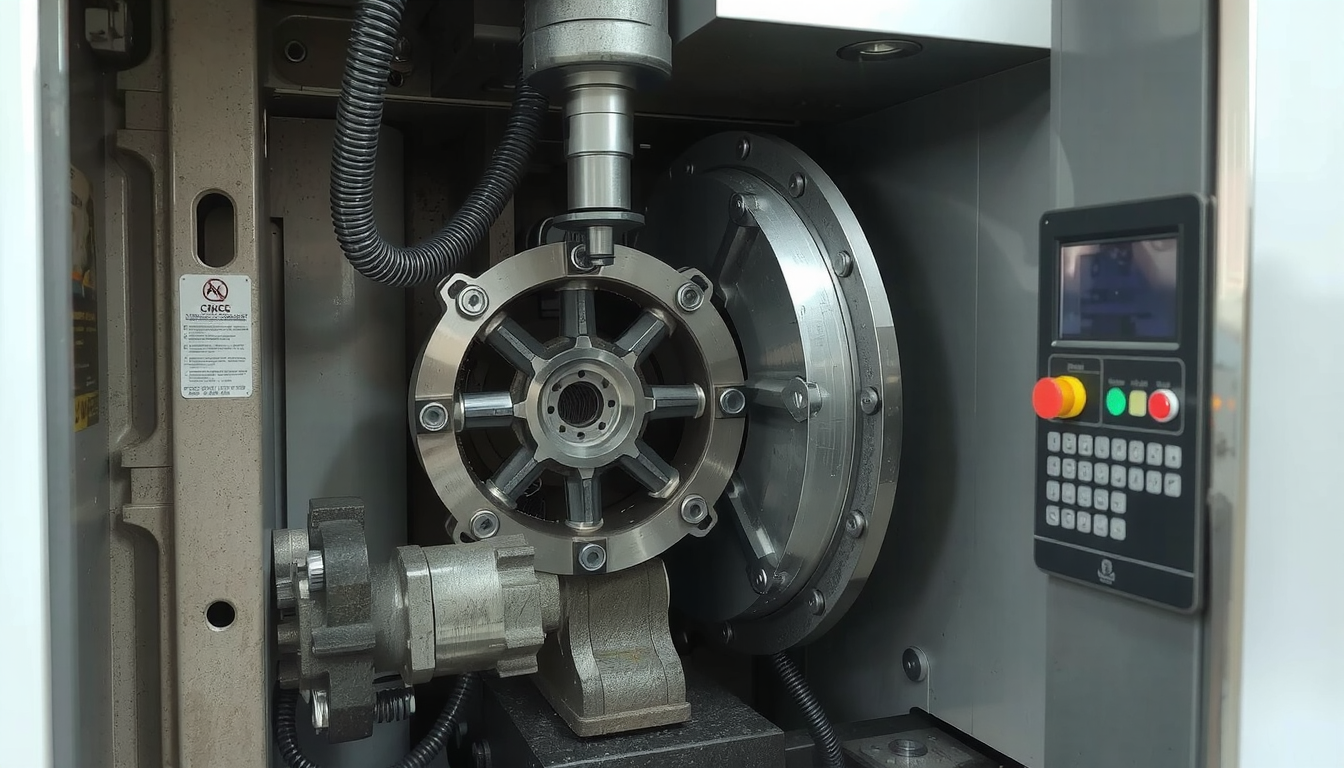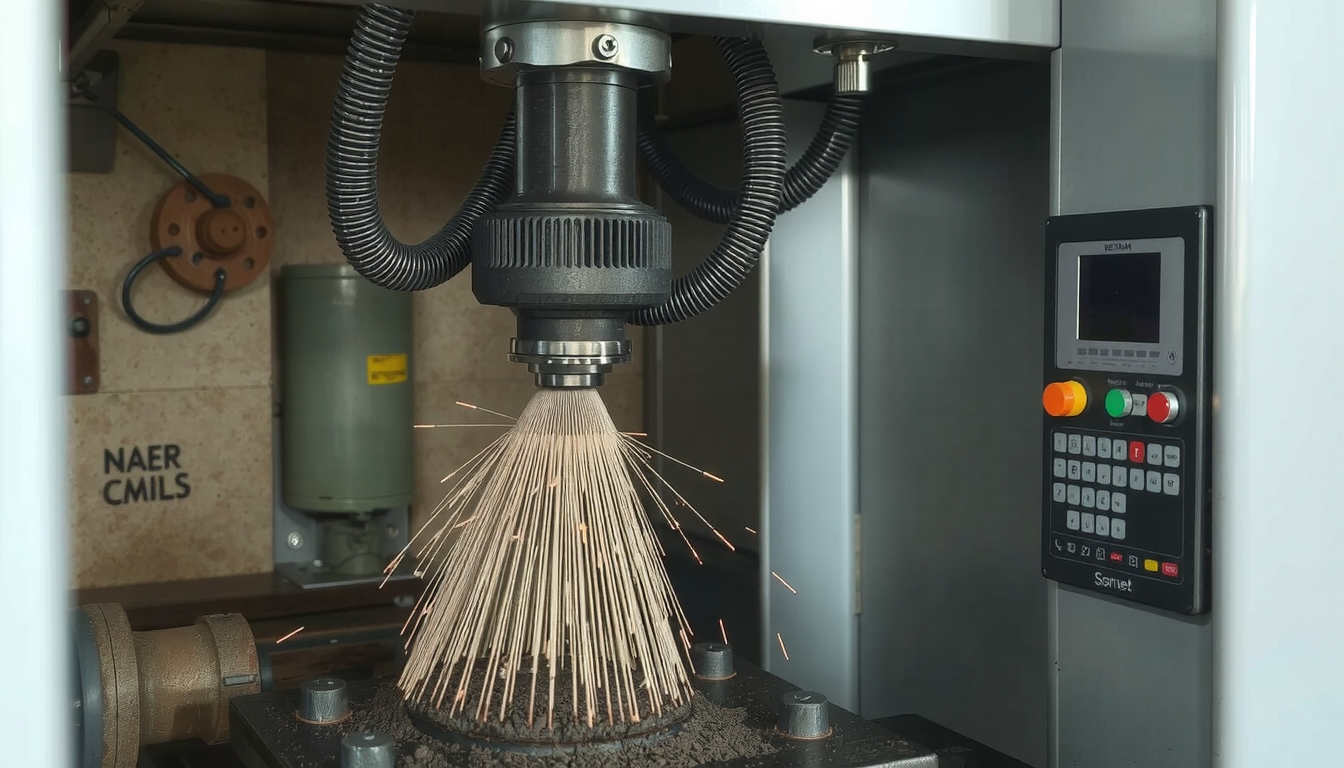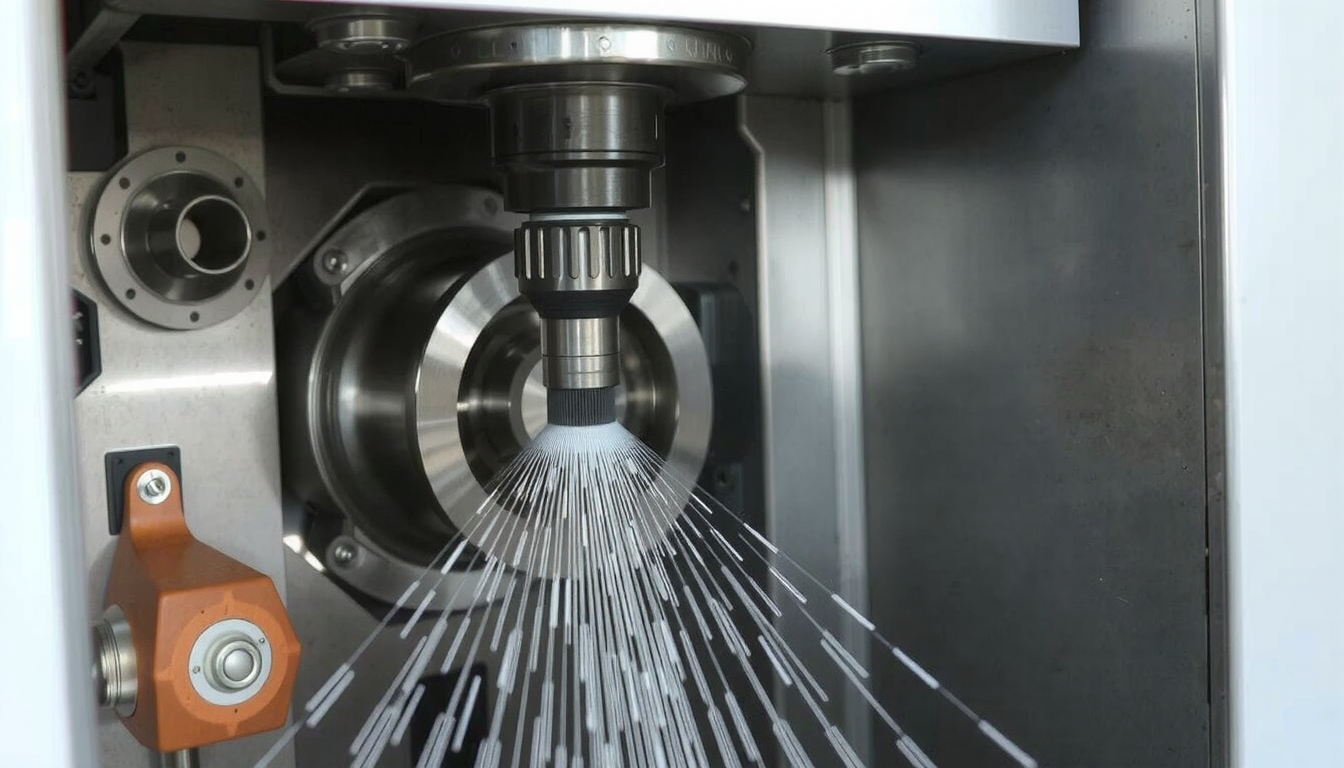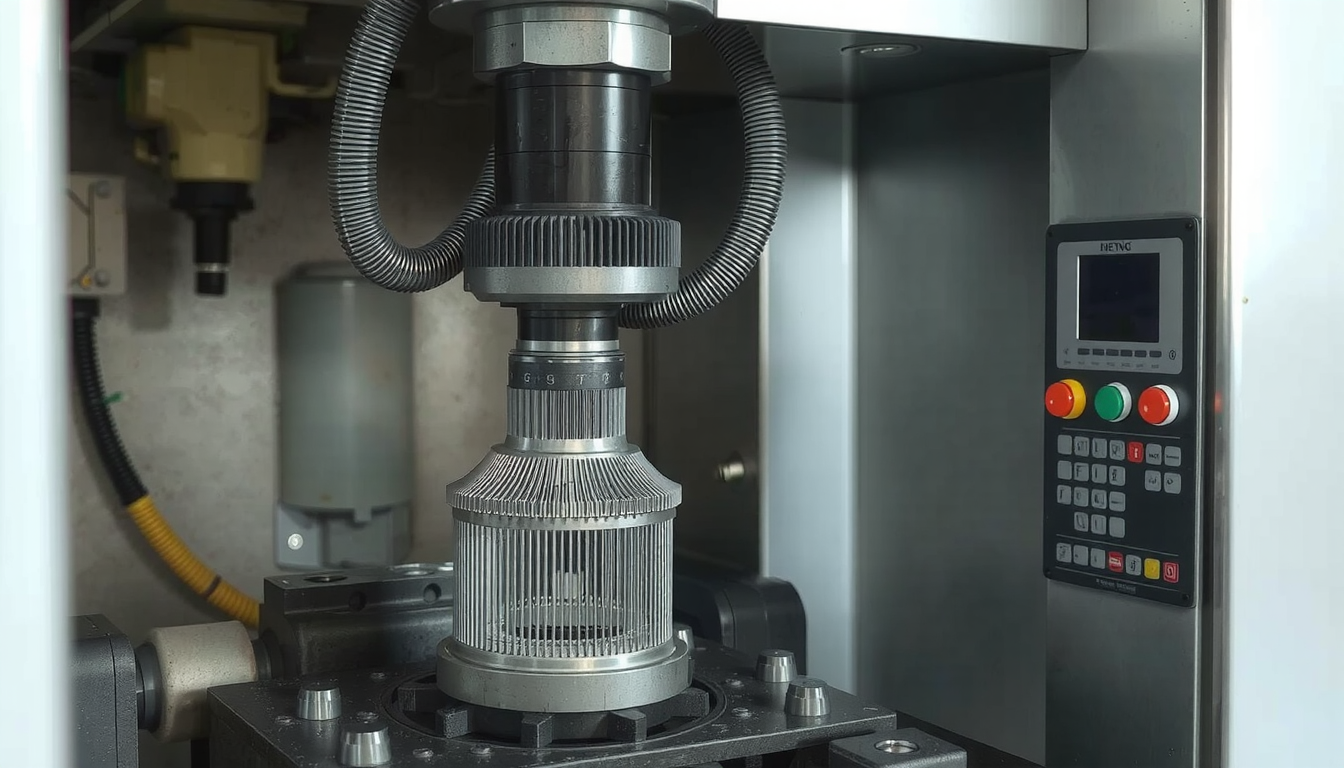In CNC turning, a workpiece of material gets rotated and is being cut by the cutting tool. In CNC milling, the workpiece stays in one place and the rotating tool cuts it off. To make it clear, think turning is like a potter’s wheel for shaping clay while milling is like a sculptor carving a block of stone.

Both belong to the category of “subtractive manufacturing.” This denotes the concept of starting from a solid block of material where parts are extracted to arrive at a finished product later on. In this guide, we will answer the question: what is CNC turning and milling for you in no time?
We will examine both processes in detail. We will present a side-by-side analysis. Finally, we will help you decide on the best method suitable for your project.
The Base: The Meaning of “CNC”
Turning and milling can only stride ahead after looking into the “CNC” issue first. CNC is short for Computer Numeric Control.
It indicates that a computer is in charge of machine tools. It employs a distinct command language known as G-code to contemplate the proceedings of the machine. This is the human operator’s action of flipping switches and levers superseded by a machine.
Commands given to CNC equipment remarkably outweigh manual tools at work. It ensures therefore that precision is a goal that is nearly unreachable for manual work.
- Precision: The machine operates the same program at every single turn.
- Repeatability: Each component manufactured is nearly equal to the previous one.
- Complexity: Tapping it allows us to put into production intricate shapes unthinkable by humans.
In-Depth: CNC Turning
CNC turning is the main area of working with turning machines and it refers to obtaining construction elements of round or cylindrical shape.
The Core Functioning Principle: A Rotating Workpiece and Stationary Tool
The same potter’s wheel metaphor can help us imagine this again. The essential item in CNC turning is a workpiece in the shape of a bar or block that spins on a high speed.
Then a cutting tool moves against this rotating workpiece. With the workpiece turning, the cutting tool cuts the shape of the workpiece. The workpiece spins while the cutting tool moves in a linear direction to give it the required shape.
The Machine: CNC Lathe
The primary machine that allows CNC turning is the CNC lathe. It has several important components that work together to accomplish this task.
The chuck represents a super strong hand that smells the workpiece. The spindle is the spinning part that drives the chuck and the high-speed workpiece. The turret is a holder for multiple cutting tools that automatically swaps them based on the machining needs.
Common Operations and Resulting Shapes
Overheads are meant to cover just those parts which in the making are commendably balanced around a primal axis. It is a very productive way to manufacture products that are cylindrical or conical. The following are some common operations:
- Facing: of the end of the part makes a surface that is flat, smooth, and clear.
- Turning: the part reduces the outside diameter to a specified size.
- Grooving: this cutting operation introduces a channel or a notch into the piece.
- Drilling: is in the performance of this operation where a hole is formed in the part that is spinning.
- Threading: the operation where the outside or inside of the piece is effaced with screw threads.

Manufacturers in need of parts like pin shafts, rollers, and other custom fasteners should look into professional services offered by Servicios de torneado CNC to get designs moving from the paper to reality.
In-Depth: CNC Milling
Turning is a no-go for round parts and that’s why CNC milling is the best process to use in most other cases. It’s the manufacturing method with the greatest adaptability.
The Basic Principle: Stationary Workpiece, Rotating Tool
Now, let’s go with the sculptor analogy. In CNC milling, the workpiece is firmly positioned on a table and does not spin.
In its place, a cutting tool with many sharp edges churns rapidly. As this rotating tool is traversed about the workpiece, it chips away at the material and thus carves features like pockets, slots, and complex surfaces.
The Machine: CNC Mill with Its Axes
The CNC mill, or what is referred to as a machining center, is the machinery for this process. The number of axes in a machine is a critical aspect that determines CNC milling.
The 3-axis mill is the most common type used. This type of equipment has the advantage of moving left-to-right (X-axis), forward-and-back (Y-axis), and up-and-down (Z-axis). This is absolutely paramount for making parts with flat surfaces and pockets.
While a 5-axis mill may be a bit more complex, it introduces two rotation axes. Therefore the tool can be tilted and rotated, or vice versa. This feature of machine cutting at almost any angle in one setup is what machine makes such shapes possible.
Typical Operations and Resultant Shapes
Milling is a way to create features that are not round. This includes flat surfaces, holes that are not in the center, and custom-shaped pockets. For enhanced understanding, a detailed CNC milling documentation may be referred to. Moreover, it is more successful in creating prismatic components such as brackets and enclosures, as well as complex 3D shapes.
Turning vs. Milling: Face-Off
Having explored the basic principles of CNC turning and milling, which are now available for our gaze to observe, it is time for a head-to-head comparison. They both affect the volume of material but the differences are such that only one suited a specific operation.
Below is a handy, quick reference table that provides overall information.
| Criterion | Torneado CNC | Fresado CNC |
|---|---|---|
| Core Motion | A cutting tool that is stationary is contrasted with a rotating workpiece at high speed. | A rotating tool cuts a stationary workpiece. |
| Typical Shapes | Forming parts nearly cylindrical or cone-shaped (like shafts, pins, nozzles). | Obtaining prismatic or non-round parts (for example; enclosures, brackets, molds). |
| Cutting Tools | Employs devices which have one cutting point exclusively that takes away material through shaving. | Making use of more than one cutting point (like end mills) that chip material apart is the method of choice. |
| Complejidad de la instalación | Usually, it is easier, faster, and less complicated to do the job on simple round parts. | Can be more complex, especially for multi-axis jobs. |
| Relación coste-eficacia | The cost per part is quite low; extremely profitable in the case of large quantities due to the fact that the parts are all equal. | Despite the fact that it’s more versatile, it can often have a higher cost per part due to prolonged cycle times. |
| Conventional Tolerances | Both can achieve very high precision, often around ±0.05mm (±0.002″). | Both can achieve very high precision, in most cases around ±0.05mm (±0.002″). |
Choosing the Right Process: Practical Decision Guide
The first step in deciding to go for turning or milling is to comprehend the differences. The subsequent step is to select the one adequately catering to your needs. In order to make it easy, I give you a basic guide.

Question 1: What is your piece overall shape?
That’s the issue of prime significance. Watch your part’s main aspect.
When your part is basically round, just like a screw, a shaft, a pin, or a nozzle, you must first think about CNC turning. The CNC turning machine is made just for these shapes.
In case your piece has a boxy shape, flat surfaces, or symmetries that are hard to find, you should initiate with CNC milling. Think about it, parts like a swimming phone case, engine bracket, or a custom-made heatsink are precisely what we mean.
Question 2: What specific features does it have?
Next, instead of prioritizing the overall view of your part, you have to center on its detailed characteristics. Here, the knowledge of each process’s limits comes in handy.
We’ve seen that a lathe can drill the center hole easily, but is incapable of creating off-center features. On the other hand, if you have a round part that needs flat sides, multiple holes on its face, or slots along its length, you will need a milling operation.
Question 3: What is your production volume?
Think of how many parts you require.
If it comes to mass production of simple round parts, typically the first CNC turning machine is quickest and most economical. Their speed for a cycle of end items is short because the whole set-up is quick.
Clashing Machines: Mill-Turn Centers
More than frequently, modern mill-turn parts comprise both turned and milled features. Specifically, they have cylindrical and intricate attributes. To keep the machine’s effective performance rate, an exchanged mill is proposed.
Mill-turn centers, others are known by the names multi-axis lathes, and are machines that are not purely turning or milling. These are the machines that can turn, creating a part’s primary cylindrical shape, and then use “live” spinning tools to mill flats, drill holes off-center, or cut complex contours. Such a “best of both worlds” technique results in a single setup for the construction of intricate details and superior accuracy.
Practical and Industrial Applications: Where Turning and Milling Work Best
In a better light, CNC turning and milling are best demonstrated through their applications in real life. Every industry has something to show as an example.
Common CNC Turning Applications
Turnings’ immense productivity for strong, precise, round parts makes it universal.
- Aerospace: gas nozzles, high-pressure piping fittings, and shafts for motors.
- Automotive: axles, components of valves, and custom-made bolts and nuts.
- Medical: surgical instruments, bone screws such as those used in orthopedics, and dental implants.

Regular CNC Milling Applications
Milling’s possibility of creating almost anything makes it irreplaceable in countless products. Also, getting more data on Understanding CNC Milling applications will broaden your view on its various utilizations.
- Electronics: aluminum casings for devices, custom heatsinks.
- Industrial: plastic mold fabrication, jigs and fixtures for assembly lines.
- Automotive: engine blocks, suspension parts, custom brackets.
Conclusion: Informed Manufacturing Decision
What is the heart of cnc turning and milling? Let the answer be easy because of their simplicity. Turning is done by spinning the part while the milling process uses the spinning tool.
This slight difference leads to two rather different but essential production methods. Turning is fast and efficient in making good-round parts. On the contrary, milling is a profoundly adjustable process that produces non-round complicated parts.
Thus, it could be the shape of the part itself that definitively predicts the choice, its specific features, and your needs for production. Mastering those two is one part in Design for Manufacturability (DFM) and guarantees your ideas are produced effectively and cheaply.
With the guidance of experienced professionals and a full range of production solutions, you can make your project, from the design stage to reality at Mekalite.
Questions on Supply (FAQ)
1. Is it possible to run both CNC turning and milling on the same machine?
Yes, those are hybrid machines called Mill-Turn Centers or multi-axis CNC lathes. They have a lathe and a mill incorporated in one machine, allowing for the production of highly complex parts in one setup, which enhances the accuracy and reduces production time.
2. CNC turning or service milling, which is more expensive?
It all comes down to the part in question. For an uncomplicated shaft, turning will be the cheaper option by far because it has faster setup and cycle times. On the other side, milling is typically pricier for a complex part that needs a 5-axis machine by virtue of the cost of the machine, programming time, and a longer setup.
3. What kinds of materials can be utilized in CNC turning and milling?
A lot of materials can be employed in both procedures. Among metals are aluminum, steel, titanium, and brass, as well as ABS, polycarbonate, and nylon. Even wood and composite materials can be machined. The selection is driven by the function of the item.
4. For making prototypes is it CNC turning or milling better?
The two methods are excellent for making prototypes. They make parts that are of the same material as the final production, so they can be tested efficiently. In fact, the difference is not about prototyping versus production. It’s simply about the choice of the right process for the prototype shape.
5. What is the main difference between turning and milling in parts’ shapes?
The best way to remember the essentials is that: CNC turning is for items that are round or symmetric, like a baseball bat. CNC milling is for items that are more cube or have features that are not round like as a wooden rectangular shape or a custom bracket.

